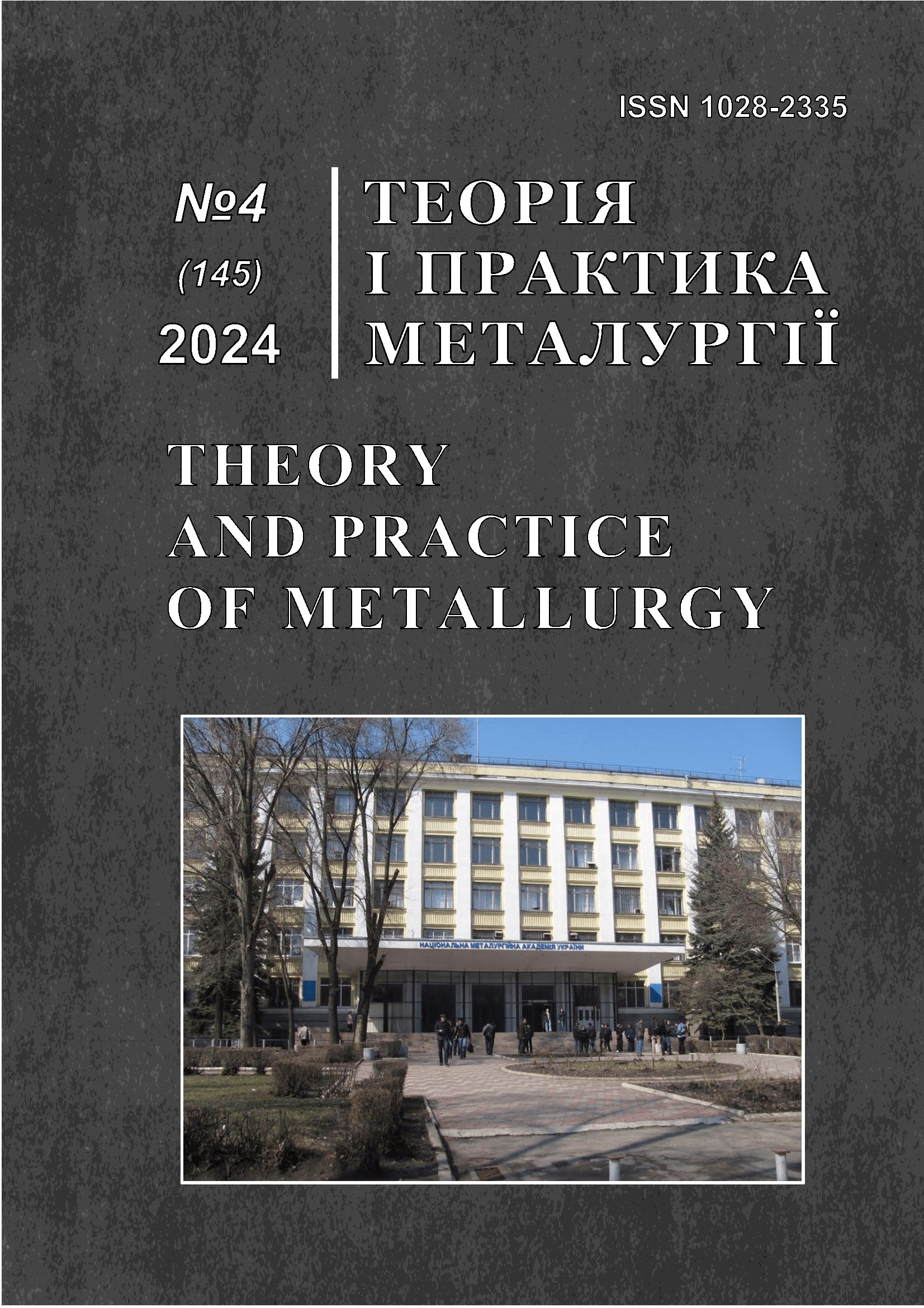Study of thermal preparation of steel ladles with the use of electric heaters
DOI:
https://doi.org/10.15802/tpm.4.2024.06Keywords:
electric heating, steel teeming ladle, refractory line, mathematical model, heat transferAbstract
The object of study is the process of heat exchange in the working space of a steel ladle and linings when they are heated with frozen electric heaters. The purpose of the study is based on the influence of the heating characteristics of the ladle on the heat flows on the surface of the lining and the temperature fields on different sections of the ladle. This study represents the mathematical model of steel teeming ladle heating using electric heater. The zone method was used to calculate the radiative heat transfer between refractory line, lid, and heating elements. Heat conductivity for each line section was calculated by finite difference method. The results of calculation of steel teeming ladle heating (up to 50 tons) are represented. The dependences of heat flux change and surface temperature upon the height of the ladle’s side wall is presented. The temperature distribution over the refractory line’s thickness is presented, too.
References
Vikhlevshchuk, V. A., Storozhenko, A. S., Shkirmontov, A. P. et al. (1992). Vysokotemperaturnyi nagrev futerovki stalerazlivochnykh kovshei. Chernaia metallurgiia, (9), 13–21
Bershitskii, I. M., & Tararyshkin, A. V. (2010). Energosberegaiushchie i ekologicheski bezopasnye ustanovki dlia elektricheskoi sushki i podogreva futerovki kovshei. Stal, (2), 24 – 25
Blokh, A. G., Zhuravlev, IU. A., Ryzhkov, L. N. (1991). Teploobmen izlucheniem. Spravochnik Energoatomizdat
Michael, F. (2003). Modest. Radiative heat transfer. An imprint of Elsevier Science. Academic Press
Downloads
Published
How to Cite
Issue
Section
License
Copyright (c) 2024 Romanko Ya.V., Meshkova A.H., Sulimeko S.Ye.

This work is licensed under a Creative Commons Attribution 4.0 International License.
Authors retain copyright of the published papers and grant to the publisher the non-exclusive right to publish the article, to be cited as its original publisher in case of reuse, and to distribute it in all forms and media. Articles will be distributed under the Creative Commons Attribution 4.0 International (CC BY 4.0) licence.
Authors can enter the separate, additional contractual arrangements for non-exclusive distribution of the published paper (e.g., post it to an institutional repository or publish it in a book), with an acknowledgement of its initial publication in this journal.




